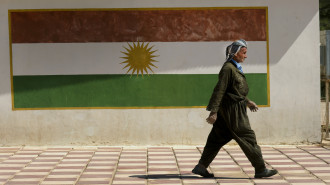The erasure of Yarmouk: How the Assad regime is dismantling Syria's hub of Palestinian life
Ravaged by Syria's counter-revolutionary war, more than two years after the cessation of local fighting the camp still lies in ruins.
Residents who were forcibly displaced are yet to return, and a new reconstruction plan threatens to make their displacement permanent.
Yarmouk is one of several formally oppositional communities in which a series of housing, land and property laws and re-development plans are being used to expropriate the property of the original inhabitants and change demographics.
Yarmouk Camp was established in 1957 to accommodate Palestinian refugees who had fled the 1948 Nakba (catastrophe) and ethnic cleansing of Palestine.
While not officially recognised as a camp, it was home to the largest concentration of Palestinian refugees outside their native land, and was a cultural, political and intellectual hub for Palestinian life in exile.
Over time it grew into a densely populated residential neighbourhood which, prior to the Syrian revolution, housed some 160,000 Palestinians and tens of thousands of Syrians. A bustling commercial centre, people from across Damascus would visit Yarmouk's vibrant markets.
 |
Yarmouk refugee camp was once known as the 'capital of the Palestinian diaspora' |  |
Due to their precarious status as refugees, Palestinian civil society and political factions in Yarmouk decided to maintain a position of neutrality when the revolution broke out. The camp remained relatively calm and provided safe haven for Syrians fleeing regime repression elsewhere. The turning point came on 15 May 2011.
The Syrian regime had encouraged Palestinian youths to demonstrate on the border of the Israeli-occupied Golan Heights to commemorate the Nakba. Israeli soldiers fired tear gas and live bullets at demonstrators resulting in hundreds of injuries and 17 deaths as Syrian soldiers stood by without intervening and prevented ambulances from reaching the wounded.
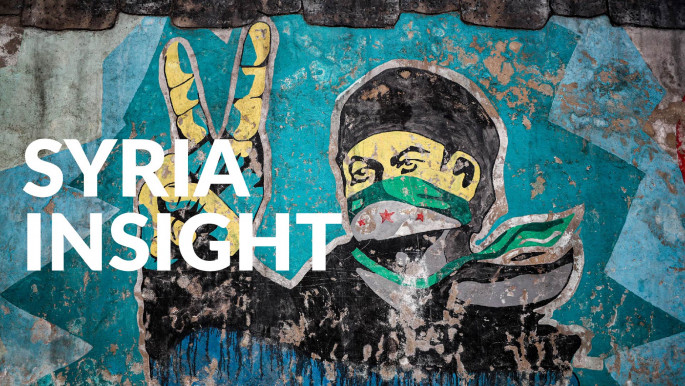 |
|
| Read more: Syria Insight: Syria's collapsing economy threatens Assad's rule |
Many believed that the regime had used them to deflect attention from the uprising. Funerals for the dead turned into the first of many anti-regime demonstrations.
In December 2012, MiG war planes shelled the Abdel Qadir Al-Husseini mosque in the heart of the camp, where internally displaced people were sheltering. Dozens were killed. This resulted in the entry of opposition militia fighting the regime.
Palestinian factions joined both sides. Some 80 percent of the population fled and a partial siege was imposed by the regime and the loyalist Popular Front for the Liberation of Palestine-General Command.
The humanitarian situation dramatically worsened in July 2013 as a full siege was enforced by the regime, preventing the entry of food and humanitarian aid for the 18,000 civilians trapped inside. Fatwas (religious edicts) were issued permitting the consumption of cats and dogs (prohibited in Islam) to fend off starvation.
A lack of medical supplies and the regime's destruction of medical facilities meant that those injured by the constant shelling, or those with chronic illnesses, faced a death sentence. In order to survive, people planted rooftop gardens. When the regime finally permitted UNRWA to enter in January 2014, photos of emaciated residents queuing for food amongst an apocalyptic wasteland of bombed-out buildings shocked the world.
 |
The Syrian regime has portrayed itself as defender of the Palestinian cause. Yet no mercy was shown to the people of Yarmouk |  |
The Syrian regime has portrayed itself as defender of the Palestinian cause. Yet no mercy was shown to the people of Yarmouk who were collectively punished for the 'crime' of providing shelter to the displaced and later joining Syria's struggle for freedom and social justice.
The Action Group for Palestinians of Syria (AGPS) documents 1,458 Palestinians from Yarmouk killed since 2011. This includes 496 who died due to shelling of the camp, 208 who died from starvation or medical neglect due to the siege and 215 tortured to death in the regime's detention centres.
Despite the regime's control of entry points to the camp, in April 2015 the Islamic State (IS) captured over 60 percent of Yarmouk. It brought with it a new reign of terror, clamping down on civil society activists and independent voices and carrying out floggings and executions. At this point 3,000 civilians remained under IS occupation.
The regime and its allies launched an all-out assault on the camp to oust IS in April 2018. A month of intensive bombing left some 80 percent of the camp's buildings and infrastructure destroyed. A Russian sponsored deal saw IS members and their families evacuated to the desert east of Suweida and the remaining civilian population was forcibly displaced as the regime re-took control.
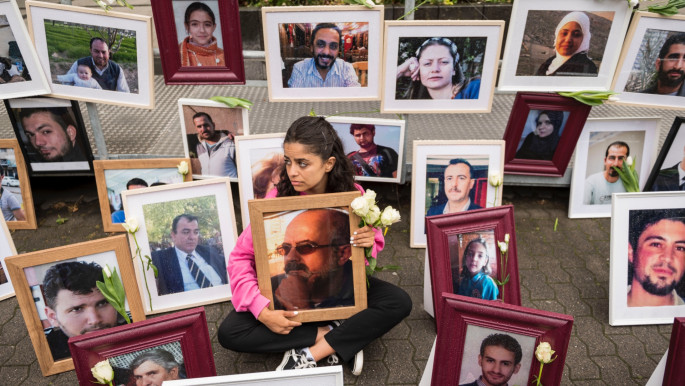 |
|
| Read more: Assad's henchmen: The painstaking hunt for Syrian war criminals in Europe |
Just two months later, IS carried out a string of attacks in Suweida targeting the Druze minority population. Many believed the regime facilitated the assault – a cynical ploy to re-impose control over the province.
Following the ceasefire many families attempted to return to Yarmouk but were prevented. Some were permitted brief entry to inspect their homes after receiving security clearance and paying bribes. In the following days photos circulated on social media of regime-affiliated militia looting the property of former residents.
Rami, whose family hails from Suweida, is one of many Syrians who call Yarmouk home. He fled the camp in June 2018, just six days before the regime entered. He was devastated to see his home being looted live on Al-Akhbariya(Syrian state TV). "They stole everything," he says. "Even my father's extensive library. They took my telescope, the handmade carpet my late grandmother made. I have no single photo left from my childhood. These things are irreplaceable."
Despite statements by regime officials and the leaders of Palestinian factions that residents will be permitted to return once the rubble is cleared and basic services restored, many fear their displacement is permanent and that the camp's identity is being irrevocably altered.
 |
'Reconstruction' is used as a tool to facilitate the transfer of property from its previous owners to corrupt regime-affiliated businessmen |  |
Yarmouk, previously managed by a local committee under the Syrian Ministry of Local Administration, has recently been incorporated into Damascus Governorate, ending its unofficial status as a camp. In June a reconstruction plan was issued by the Damascus Governorate. Residents were given 30 days to prove property ownership and submit objections. Many residents do not possess ownership documents.
Others have lost their documents in the course of the conflict or are currently residing outside the country. According to Rami "even people who can get the paperwork don't want to do it because they don't trust the system, there's too much risk of arrest or they can't afford the expense of paying the bribes."
Under the plan, residents from just 40 percent of the camp which suffered mild damage can return. The remaining 60 percent will undergo re-development with contracts likely awarded to those closely affiliated to the regime, as has happened elsewhere. No compensation or alternative housing is offered except for small shares for those able to prove ownership.
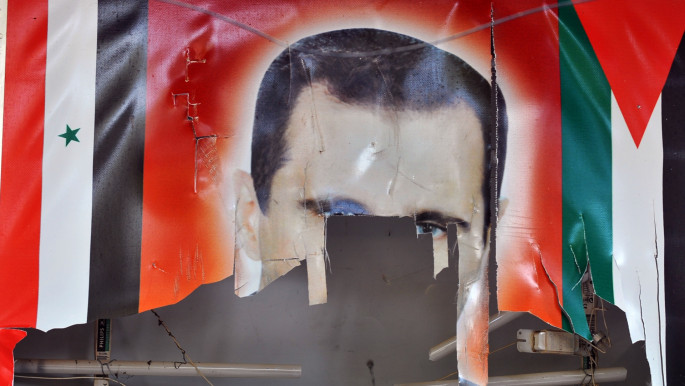 |
|
| Read more: Charting the dramatic collapse of Syria's national currency |
According to the AGPS, "The new plan will remarkably change the demographic and architectural identity of the camp. Several buildings and facilities will be removed, which will lead to a mass displacement of refugee families and a further deterioration of their humanitarian condition. It is believed that if the plan is implemented, over half the residents will not be able to return to their homes."
Over 10,000 objections have been submitted by residents and 3,000 signed a petition demanding the rehabilitation of the camp and their immediate return, offering to carry out reconstruction work themselves.
"I lost my home once when I had to flee for my life," Rami says. "I lost it again when I saw it being looted by the Syrian army live on TV … and here I lose it once more to this legalised usurpation of our land."
As elsewhere 'reconstruction' is used as a tool to facilitate the transfer of property from its previous owners to corrupt regime-affiliated businessmen and to ensure that the population of 'oppositional' communities is permanently displaced.
Yet given that Yarmouk was home to large numbers of Palestinian refugees, the displacement has wider implications. Prominent Syrian-Palestinian intellectual Salameh Kaileh argues that what happened in Yarmouk was a premeditated strategy to end the 'refugee problem' or the Palestinian presence in Syria, doing untold damage to the wider Palestinian cause.
In his view the regime facilitated the entry of weapons to drag the camp into the conflict, and the entry of extremist groups to serve as a pretext for intensive bombing and starvation siege, both to systematically destroy the campand to empty it of its inhabitants. Even worse than regime actions, Kaileh condemns those who have defended the regime, and betrayed the Palestinian cause "under the illusion of fighting imperialism."
Leila al-Shami is a British-Syrian activist who has worked with the human rights movement in Syria and elsewhere in the Middle East. She is co-author of Burning Country: Syrians in Revolution and War
Follow her on Twitter: @LeilaShami
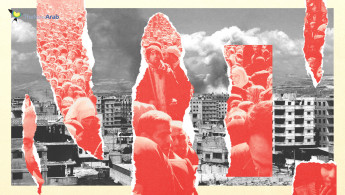



 Follow the Middle East's top stories in English at The New Arab on Google News
Follow the Middle East's top stories in English at The New Arab on Google News


